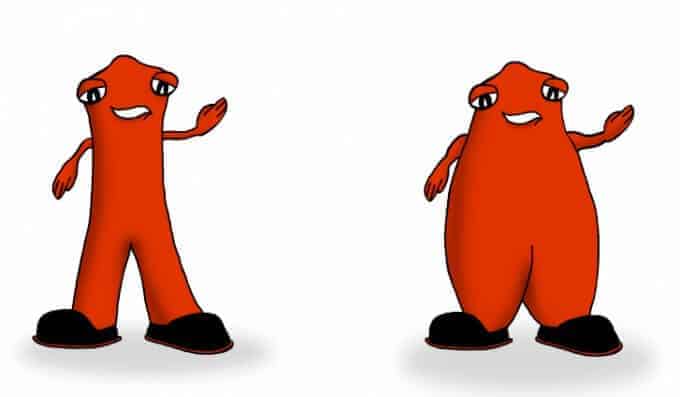Children consume more low-nutrition, high-calorie food such as cookies and candy after observing seemingly overweight cartoon characters, according to a first-of-its-kind study led by the University of Colorado Boulder.
The results of the new study, involving Colorado State University and published online in the Journal of Consumer Psychology, show that kids are responsive to the apparent bodyweight of cartoon characters like the aptly named Grimace, a rotund, milkshake-loving creature created by McDonald’s restaurant in the 1970s.
Children tend to perceive ovoid, or egg-shaped, characters as overweight even though the creatures are imaginary, found the study.
“Because research like this is new — looking at kids and stereotyping particularly of cartoon characters — we weren’t sure whether kids would be aware of bodyweight norms,” said Margaret C. Campbell, marketing professor at CU-Boulder’s Leeds School of Business and lead author of the study. “But surprisingly, they apply typically human standards to cartoon creatures — creatures for which there isn’t a real baseline.”
In addition, seeing ovoid cartoon characters can influence children to eat more unhealthy food, according to the study.
“They have a tendency to eat almost twice as much indulgent food as kids who are exposed to perceived healthier looking cartoon characters or no characters at all,” said Campbell.
The inclination to eat more junk food was curtailed, however, when kids in the study first had the opportunity to summon their previously learned health knowledge. That is, before looking at the ovoid cartoon character and then taking a cookie taste-test, the children’s health knowledge was activated when they were asked to choose the healthiest option represented in six pairs of pictures and words — such as getting your sleep versus watching TV, soda versus milk and playing inside versus playing outside — which led to lighter cookie consumption.
“This is key information we should continue to explore,” said Campbell. “Kids don’t necessarily draw upon previous knowledge when they’re making decisions. But perhaps if we’re able to help trigger their health knowledge with a quiz just as they’re about to select lunch at school, for instance, they’ll choose the more nutritious foods.”
Kenneth Manning, professor of marketing at Colorado State University; Bridget Leonard, CU-Boulder graduate student at the time of the study and now assistant professor of marketing at Indiana University-Purdue University Fort Wayne; and Hannah Manning, CSU student, co-authored the paper.
The findings — gathered from just over 300 participants in three age groups averaging 8, 12 and 13 years old — have implications for marketers as well as parents navigating a world where children encounter cartoon characters in a variety of media, from books to graphic novels, TV shows, video games, movies and more.
“What I would like to see is companies being a lot more responsible with their own marketing choices,” said Campbell. “I think it is important for parents to know they should think about the way they might be associating food with fun for kids — in the form of exposure to cartoon characters, for instance — as opposed to associating food with nutrition and the family structure.”
The Kellogg’s brand is an example of a company that changed the image of one of its cartoon characters in a responsible way, according to Campbell. Several years ago, it revamped Tony the Tiger to be slimmer and more athletic, which may link the character with healthier eating ideas rather than linking to ideas of eating lots of sugary cereal, she said.
If our reporting has informed or inspired you, please consider making a donation. Every contribution, no matter the size, empowers us to continue delivering accurate, engaging, and trustworthy science and medical news. Independent journalism requires time, effort, and resources—your support ensures we can keep uncovering the stories that matter most to you.
Join us in making knowledge accessible and impactful. Thank you for standing with us!

